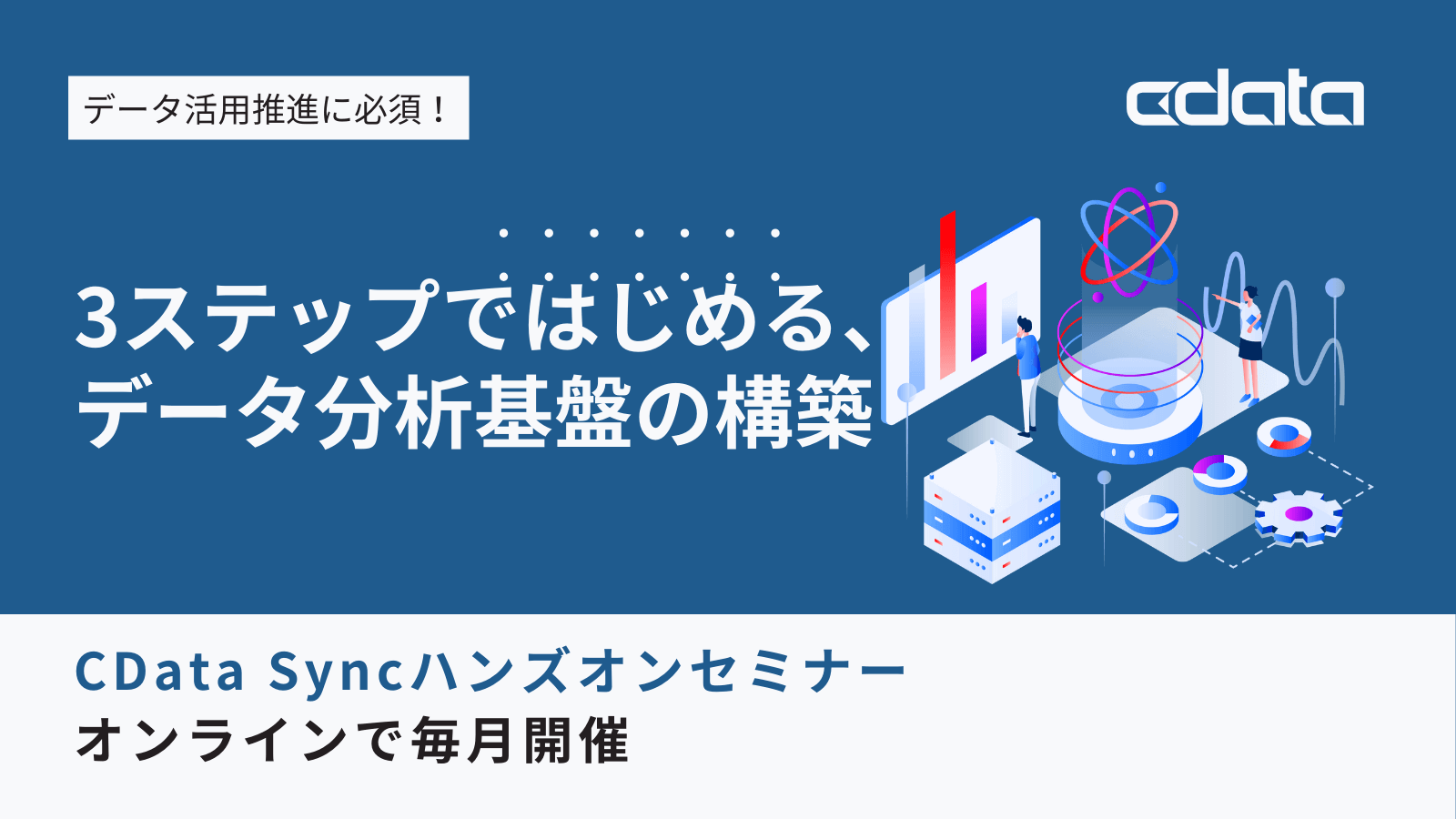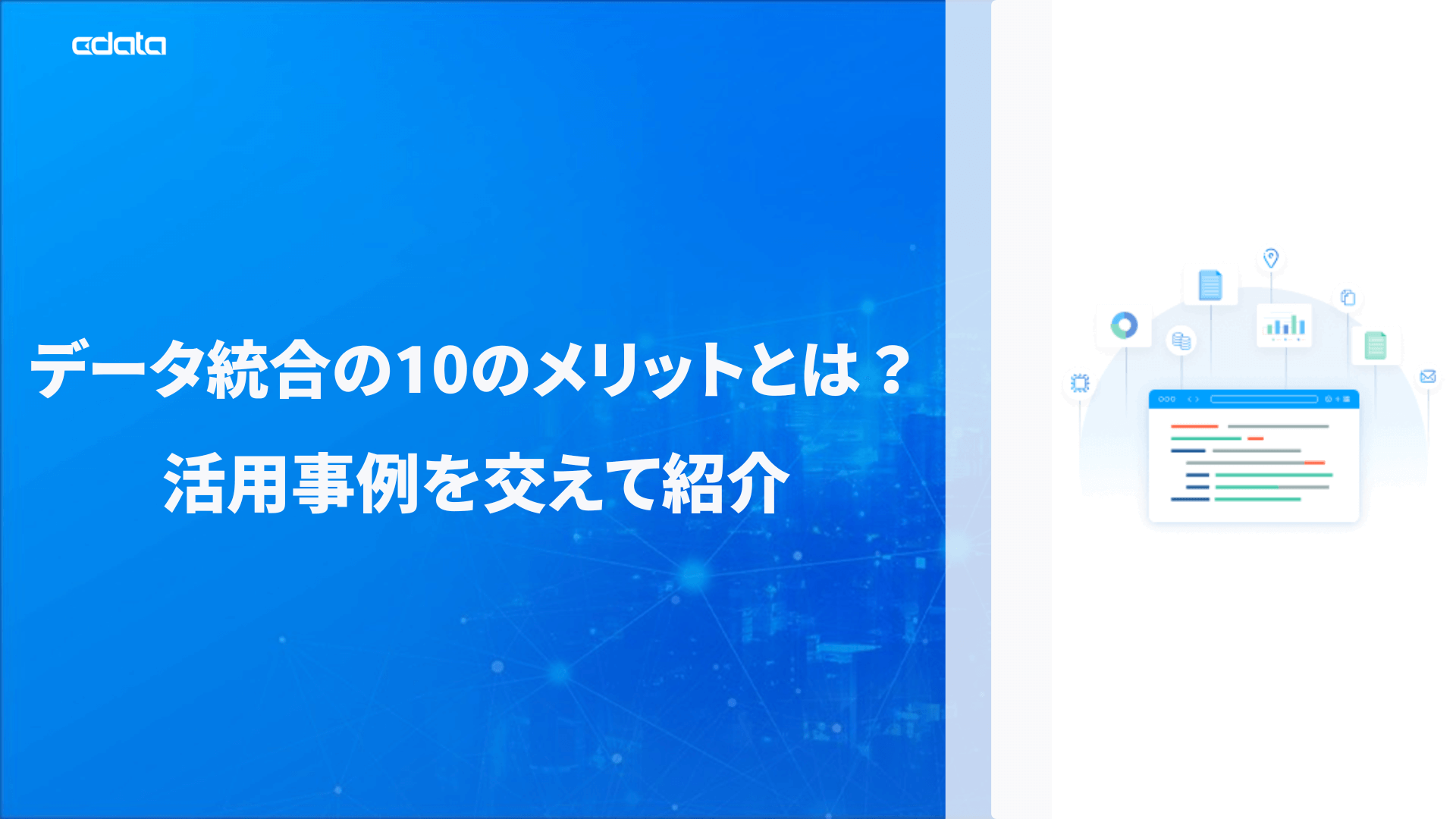ノーコードでクラウド上のデータとの連携を実現。
詳細はこちら →CData Software Japan - ナレッジベース
Latest Articles
- MySQL のデータをノーコードでREST API として公開する方法:CData API Server
- CData Sync AMI をAmazon Web Services(AWS)で起動
- Connect Cloud Guide: Derived Views, Saved Queries, and Custom Reports
- Connect Cloud Guide: SSO (Single Sign-On) and User-Defined Credentials
- Connect Cloud クイックスタート
- Shopify APIのバージョンアップに伴う弊社製品の対応について
Latest KB Entries
- DBAmp: Serial Number Expiration Date Shows 1999 or Expired
- CData Drivers のライセンスについて
- Spring4Shell に関する概要
- Update Required: HubSpot Connectivity
- CData Sync で差分更新を設定
- Apache Log4j2 Overview
ODBC Drivers
- [ article ] Delphi のCouchbase データへのデータバインドコントロール
- [ article ] Tally データをR で分析
- [ article ] ODBC を介してNode.js からAvalara AvaTax データをクエリ
- [ article ] PostgreSQL ODBC データソースとの間にInformatica マッピングを作成
JDBC Drivers
- [ article ] ETL/ELT のEmbulk を使ってKafka データをDB にロードする方法
- [ article ] Crystal Reports でMySQL データに連携して帳票を作成
- [ article ] Crystal Reports でMicrosoft OneDrive データに連携して帳票を作成
- [ article ] Birst でBullhorn CRM のビジュアライゼーションを構築
SSIS Components
- [ article ] Zoho Projects データからSQL Server ...
- [ article ] SAS Data Sets をSSIS 経由でSQL サーバーにバックアップする
- [ article ] SSIS を使ってAccess データをSQL Server にインポート
- [ kb ] How to Replicate Data Between MySQL and SQL Server ...
ADO.NET Providers
- [ article ] PowerShell からSansan データに接続してデータの更新・挿入・削除を実行する方法
- [ article ] Adobe Analytics をHeroku にレプリケーションして、Salesforce ...
- [ article ] PCA Sales データをDevExpress Data Grid にデータバインドする。
- [ article ] Infragistics XamDataGrid を使用してBing Search ...
Excel Add-Ins
- [ article ] Oracle Data Integrator でSharePoint Excel Services ...
- [ article ] Alteryx Designer でSharePoint Excel Services ...
- [ article ] ノーコードツールAdalo でExcel 連携アプリを作成
- [ article ] SharePoint Excel Services データをYellowfin ...
API Server
- [ article ] Denodo Platform でOData データソースを作成
- [ article ] Linux 上でOData データに接続するGo アプリケーションを作成する方法
- [ article ] Apache Spark でOData データをSQL で操作する方法
- [ article ] SAS でCData Software ODBC Driver for OData を使用
Data Sync
- [ article ] Vertica へのSAS Data Sets データのETL/ELT ...
- [ article ] Microsoft OneDrive データをSQL Server ...
- [ article ] SQLite へのFreshdesk データのETL/ELT ...
- [ article ] Azure Synapse へのAzure DevOps データのETL/ELT ...
Windows PowerShell
- [ article ] PowerShell からConfluence ...
- [ article ] PowerShell からMicrosoft Dataverse ...
- [ article ] WooCommerce データをPowerShell でMySQL にレプリケーションする方法
- [ article ] PowerShell からDynamics 365 ...
FireDAC Components
- [ article ] Delphi のBlackbaud FE NXT データへのデータバインドコントロール
- [ article ] Delphi のBox データへのデータバインドコントロール
- [ article ] Delphi のAmazon S3 データへのデータバインドコントロール
- [ article ] Delphi のeBay データへのデータバインドコントロール






